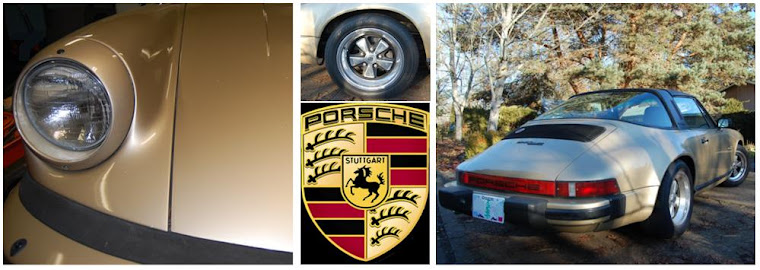A common racing setup to increase the suspension stiffness is to add coil springs around the housing of the shock or strut. These coilovers are great because they are easily adjustable, but this option is not cheap. In fact it is quite expensive. But they do look nice:
I chose a more economical option. The stock springs on the 911 are not leaf springs or coil springs, but torsion springs. A torsion spring is a bar, gripped at both ends with splines, that is loaded by twisting as the wheels move up and down. The torsion bars are mounted inside the tube of the A arm (see the red arrows in the image below). The spring rate can be increased by using a torsion bar with a larger diameter, and because increasing suspension stiffness is such a popular upgrade, torsion bars are available in various diameters in 1 mm increments.
The stock torsion bars are 19 mm in diameter in front and 24 mm in back. A commonly recommended setup for autocross racing and street use is a 21/28 mm torsion bars. I did some calculations, to take into account the extra mass of my batteries, and determined that the 22/29 mm bars would be good in my car:
The old bars are slightly bent.
Installation wasn’t too bad. It took me about four hours, following the procedure on the Pelican Parts website.
With the ride height restored to factory specification, I took the car out for a test drive, and I must say the difference is astounding. The biggest issue was tire rub, and the new springs completely solved that problem. But surprisingly, the steering was much lighter, and more like I remember from when the car was still gasoline powered. I think the alignment and steering geometry must have been compromised with the lower position. Further, I can feel that the back end of the car moves around more than the front. There is a rolling feel or slow bounce that is distinctly occurring in the back of the car coming out of turns or cresting rolling hills. I can’t wait to see how the car handles when I get the new rear springs installed.
With the ride height restored to factory specification, I took the car out for a test drive, and I must say the difference is astounding. The biggest issue was tire rub, and the new springs completely solved that problem. But surprisingly, the steering was much lighter, and more like I remember from when the car was still gasoline powered. I think the alignment and steering geometry must have been compromised with the lower position. Further, I can feel that the back end of the car moves around more than the front. There is a rolling feel or slow bounce that is distinctly occurring in the back of the car coming out of turns or cresting rolling hills. I can’t wait to see how the car handles when I get the new rear springs installed.





No comments:
Post a Comment